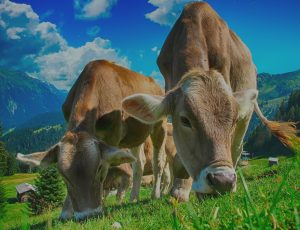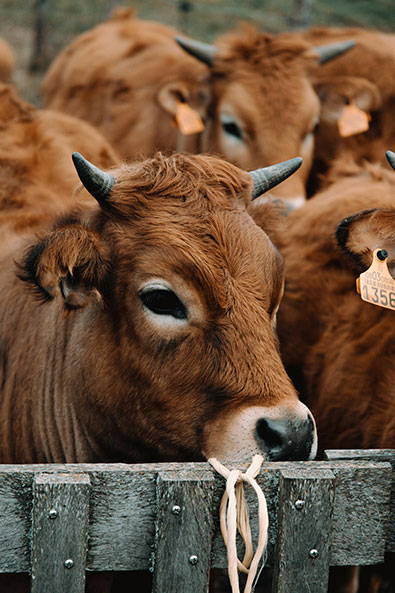Glucose Precursors for ruminant
The Necessity of Glucose Precursors for Transition Dairy Cows and Their Benefits
Introduction
Glucose Precursors for ruminant, The transition period—the few weeks before and after calving—is one of the most critical phases in a dairy cow’s life. During this period, cows undergo dramatic physiological, metabolic, and hormonal changes as they shift from a dry (nonlactating) state to the onset of lactation. One of the major challenges is a sudden increase in energy demand, primarily due to the rapid onset of milk synthesis. When feed intake does not meet these energy requirements, cows enter a state of negative energy balance (NEB). NEB is linked to several metabolic disorders such as ketosis, fatty liver, reduced immune competence, and impaired reproductive performance. Addressing NEB is therefore essential not only for the health and welfare of the cow but also for optimizing milk production and farm profitability.
Glucose is the primary precursor for lactose synthesis—the main osmoregulator of milk—and is also a critical substrate for many other metabolic processes, including immune function. However, ruminants rely mainly on hepatic gluconeogenesis to meet their glucose needs, as little glucose is absorbed directly from the diet. To support the metabolic demands of early lactation, supplementation with glucose precursors has emerged as an effective nutritional strategy. Glucose precursors, such as propylene glycol and glycerol, can bypass some of the limitations inherent in ruminal fermentation and enhance the supply of glucose via hepatic conversion.
Metabolic Challenges During the Transition Period
Negative Energy Balance and Its Consequences
After calving, dairy cows face a steep increase in energy demand that is not immediately matched by feed intake. This results in NEB, during which cows mobilize body fat and muscle protein to meet their energy needs. The mobilization leads to elevated blood concentrations of non-esterified fatty acids (NEFA) and ketone bodies (such as beta-hydroxybutyrate, BHBA). Although this mobilization helps to supply energy, excessive fat mobilization can lead to metabolic disorders including clinical or subclinical ketosis. Ketosis not only reduces milk production but also has negative impacts on reproduction and immune function.
Glucose: A Critical Nutrient
Glucose plays a central role in the dairy cow’s metabolism. It is the key substrate for lactose synthesis in the mammary gland, which in turn regulates milk volume. Beyond lactation, glucose is essential for many other tissues—especially immune cells. During the transition period, the mammary gland and the immune system may compete for available glucose. In high-producing cows, the mammary gland is prioritized, sometimes at the expense of immune function. This trade-off can contribute to immunosuppression and an increased risk of diseases such as mastitis and uterine infections.
The Role of Glucose Precursors
What Are Glucose Precursors?
Glucose precursors are compounds that can be converted by the liver into glucose through the process of gluconeogenesis. The two most commonly used precursors in dairy nutrition are propylene glycol and glycerol. Propylene glycol, for example, is converted mainly into propionate in the rumen or absorbed directly and metabolized in the liver to yield glucose. Glycerol follows a similar pathway but enters gluconeogenesis more directly. Some products even combine multiple precursors to harness their complementary actions.
Mechanisms of Action
The primary benefit of glucose precursor supplementation is the increased availability of substrate for hepatic gluconeogenesis. By providing an extra “boost” of precursors, these supplements help raise plasma glucose levels during the critical periparturient period. This increase in blood glucose not only supports lactose synthesis in the mammary gland but also helps to moderate the extent of lipolysis, thereby reducing NEFA and ketone body production.
Furthermore, with a more balanced energy status, cows are less likely to experience the adverse effects of NEB. Research indicates that precursor supplementation can improve insulin sensitivity and reduce the severity of metabolic stress. In addition, a more adequate glucose supply supports immune cell function by ensuring that leukocytes have sufficient energy for their activities, including phagocytosis and cytokine production.

| Glucose precursor Gluco pars |
Benefits of Glucose Precursors in Transition Cows
- Improved Energy Balance
One of the most significant benefits of supplementing glucose precursors is the improvement of the overall energy balance. Studies have shown that cows receiving these supplements demonstrate higher blood glucose concentrations during early lactation. With more glucose available, the need for extensive fat mobilization decreases, which in turn limits the production of NEFA and BHBA. Lower levels of these metabolites are associated with a reduced risk of ketosis and other metabolic disorders.
For example, research on different dosing regimens of propylene glycol has consistently revealed that even modest amounts can lead to higher plasma glucose levels while simultaneously decreasing the markers of fat mobilization. This improved energy balance is crucial for maintaining milk yield and overall health during the vulnerable transition period.
- Reduced Incidence of Ketosis
Ketosis is one of the most common metabolic disorders during early lactation, with serious consequences for milk production and reproductive performance. Glucose precursors help to minimize the severity of ketosis by supplying the liver with the necessary substrates for glucose production. By elevating blood glucose and reducing the reliance on body fat stores, supplementation with glucose precursors directly counteracts the mechanisms that lead to excessive ketone production.
A lower incidence of ketosis not only improves the health status of the cows but also has economic benefits by reducing treatment costs and losses related to decreased milk production.
- Enhanced Milk Production and Composition
The mammary gland is highly dependent on a steady supply of glucose for lactose synthesis, which directly influences milk volume. When glucose supply is inadequate, milk yield may be compromised, and the composition of the milk (particularly lactose and total solids content) can be affected. Supplementing glucose precursors during the transition period has been shown to lead to improvements in milk yield and quality.
Several studies have demonstrated that cows receiving propylene glycol or glycerol, or combinations thereof, produce milk with higher lactose content and improved total solids. Although milk fat and protein percentages may not change dramatically, the overall increase in milk yield and energy-corrected milk production translates into enhanced performance on the farm.
- Improved Reproductive Performance
Reproductive efficiency is closely linked to the metabolic status of dairy cows. A severe negative energy balance can delay the resumption of ovarian activity postpartum and lead to issues such as prolonged days open and lower conception rates. By alleviating NEB through better glucose availability, glucose precursor supplementation indirectly supports reproductive performance. Cows with a more favorable energy balance are more likely to resume normal reproductive cycles sooner, improving fertility and reducing the economic losses associated with extended calving intervals.
- Enhanced Immune Function
During the transition period, the immune system is under considerable stress. Immune cells rely heavily on glucose to perform their functions. When the mammary gland “steals” glucose to support high milk production, immune function may suffer, leaving cows more vulnerable to infections. By increasing the overall availability of glucose, precursor supplementation ensures that immune cells receive sufficient energy. This can help reduce the risk and severity of conditions like mastitis and uterine infections, which are common in early lactation.
- Economic Benefits
Ultimately, the benefits of glucose precursor supplementation extend to the economics of dairy farming. By improving energy balance, reducing the incidence of ketosis, enhancing milk production, and supporting reproductive performance, these supplements help reduce veterinary costs and production losses. Better health and performance translate into higher milk yields and improved longevity, which are critical factors for overall farm profitability.
Practical Considerations and Recommendations
Integration with Overall Nutritional Strategy
Glucose precursor supplementation should be viewed as one element of a comprehensive nutritional and management strategy during the transition period. It works best when combined with other measures designed to improve dry matter intake, optimize diet formulation, and manage body condition. Ensuring that cows have access to high-quality, energy-dense diets and adequate feed bunk space is essential for maximizing the benefits of any supplementation program.
(Glucose Precursors for ruminant)
Monitoring and Adjustments
Regular monitoring of blood metabolites, body condition score, milk yield, and overall health parameters is vital. These data allow nutritionists and farm managers to adjust the supplementation strategy as needed. In many cases, farms have found that a modest but consistent application of glucose precursors can help smooth the metabolic challenges of early lactation, while over‐ or under‐dosing may reduce effectiveness.
| RUMEN PROTECTED METHIONINE |
Conclusion
The transition period is a challenging phase for dairy cows, marked by a high risk of metabolic disorders such as ketosis and a general negative energy balance. Glucose is a pivotal nutrient that supports both milk synthesis and immune function. However, because ruminants rely primarily on hepatic gluconeogenesis for their glucose supply, meeting the demands of early lactation often becomes problematic.
Supplementation with glucose precursors such as propylene glycol and glycerol is an effective strategy to bridge this energy gap. By increasing the supply of substrates for gluconeogenesis, these precursors help elevate blood glucose levels, reduce the mobilization of body fat, and lower the risk of ketosis. In addition, better glucose availability supports enhanced milk production, improved milk composition, better reproductive performance, and a more robust immune response. Ultimately, these physiological benefits contribute to the economic efficiency of dairy operations by reducing disease incidence, lowering treatment costs, and optimizing milk yield.
Glucose Precursors for ruminant


